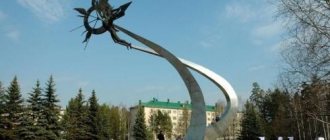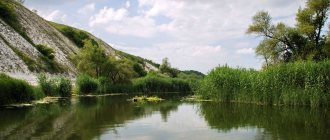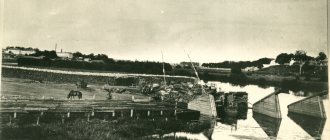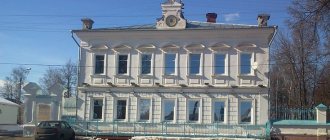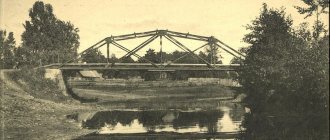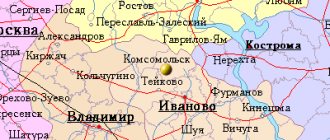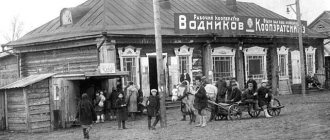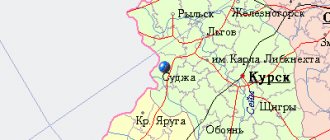The main attractions of Mosalsk
Any person planning a trip makes a list of Mosalsk attractions that are definitely worth visiting. Some develop independent routes to explore the city, while others order various sightseeing tourism programs. Traditionally, they capture the main attractions of Mosalsk and help to better understand the historical events and cultural traditions of the city.
Art lovers are always looking for sculptural attractions on the map of Mosalsk. In large city squares you can usually see iconic monuments with which all tourists take photographs. But in park ensembles beloved by the local population, you can visit exhibitions of modern sculptures and art objects. They can be made from the most unpredictable materials and present unimaginable variations of different shapes that you will need to think about more.
Among the main attractions of Mosalsk, objects of religious significance stand out. They form the architectural appearance of the Russian city, some of them have an interesting and mysterious history. In Mosalsk and beyond, you can visit the famous monastery complexes, admire the beauty of large Orthodox cathedrals, or look into the modest and small chapels that are so popular among the city’s residents.
While exploring the area near the city, you can also stumble upon unusual religious attractions. These may be objects of other religious movements, ancient cult associations, or even mysterious places of power.
A great idea is walking promenades around Mosalsk. You can pre-purchase a map of Mosalsk with attractions and routes, or even go in any direction. Then it's even more interesting. Let yourself get lost in the colorful alleys or take a walk in the parks. And if you want to take a break, you can have a snack or drink a cup of coffee in some nice cafeteria. By the way, in Mosalsk there are a couple of iconic places that every tourist wants to visit.
If you want to thoroughly study the historical past and modern life of the city, come on an excursion to the museum institutions of Mosalsk. They store rich exhibitions on ethnography, art, folk arts and crafts, from archaeological expeditions. Traditionally, such attractions are located in the center.
At the same time, open thematic museums can often be seen in rural areas. They organize interesting showrooms that convey the atmosphere of local color and present products of folk and applied art. These can also be installations of ancient settlements or protective forts. Such attractions in Mosalsk are always interesting for children.
For family tourists, the question always arises: where to go with children. The most popular offer is to go to one of the water entertainment centers in Mosalsk. There are often discounted rates available when ordering a family day pass.
If you are traveling in winter or spring, we recommend that you consider Mosalsk ski resorts for your holiday. In such a place there is a lot of entertainment for children and adults: a variety of slopes for skiing, snowboarding, snow tubing, exciting extreme parks for the pros. Often these centers are located several tens of kilometers from the city, for example: Kwan Ski Resort. So it is more convenient to arrive at the place by personal vehicle or rent a car.
A great option for a family vacation is a trip to nature. Such attractions are located near Mosalsk. These could be lakes, gorges, famous nature reserves. You just need to decide on a place. You can get here either on your own or using the services of public carriers. Find out in advance the schedule of regular buses departing from suburban bus stations in the direction you need. In such an adventure you will get many pleasant impressions from being in the fresh air, and you will put your mind and body in order.
If you came to the city on work matters, then you have little time for long excursion trips. In such a situation, you can buy a short index of Mosalsk attractions with photos and descriptions.
It can always be found upon arrival in the city in souvenir kiosks at railway stations or at the airport. This guide contains a list of the most iconic places to go in Mosalsk, with names and photos of attractions. Agree, this greatly simplifies the task of what to see in Mosalsk, especially if you are limited in time.
But, if the guidebook contains the most visited places in Mosalsk, then online you can see the top “unpromoted” but no less interesting attractions with reviews from experienced travelers. Abandoned quarries, mysterious quarries, unusual railways, viaducts - such attractions attract lovers of adventure.
When planning a trip to Mosalsk, we recommend that you learn not only about the sights, but also about other important city sites. To easily move around the city, it is worth knowing the routes of public transport, the location of railway and bus stations or ports, and metro stations. At the same time, such important transport hubs of Mosalsk can also attract the attention of travelers. Often they become the calling card of the city.
Show more
akuaku.ru
Notes
- ↑ 12
The permanent population of the Russian Federation by municipalities as of January 1, 2022 (Russian). Retrieved April 27, 2022. Archived May 2, 2022. - Law of the Kaluga Region of December 28, 2004 No. 7-OZ “On establishing the boundaries of municipalities located on the territory of the administrative-territorial units “Babyninsky District”, “Borovsky District”, “Dzerzhinsky District”, “Zhizdrinsky District”, “Zhukovsky District” , “Iznoskovsky district”, “Kozelsky district”, “Maloyaroslavetsky district”, “Mosalsky district”, “Ferzikovsky district”, “Khvastovichsky district”, “City of Kaluga”, “City of Obninsk”, and giving them the status of an urban settlement, rural settlement , urban district, municipal district"
- THE USSR. Administrative-territorial division of the union republics on January 1, 1980 / Comp. V. A. Dudarev, N. A. Evseeva. - M.: Izvestia, 1980. - 702 p. — P. 135.
- Materials for the geography and statistics of Russia, collected by officers of the General Staff. Kaluga province / comp. M. Poprocki. - SPb.: Type. E. Weimar, 1864. - 563 p.
- Populated areas of the Russian Empire with 500 or more inhabitants, indicating the total population present in them and the number of inhabitants of the prevailing religions, according to the first general population census of 1897 / preface: N. Troinitsky. - St. Petersburg: printing house "Public Benefit", 1905. - P. 75−78.
- List of populated places in Kaluga province / Ed. F. F. Kadobnova. — Kaluga: Kaluzh. lips stat. com., 1914.
- Preliminary results of the 1920 All-Russian population census for the Kaluga province / Preface by the head of the demography department of the Gubstatburo F. Kadobnov. — Kaluga: State Publishing House. Kaluga branch, 1921. - 19 p.
- Territorial and administrative division of the USSR on January 1, 1926. - M.: Publishing house GUKH NKVD, 1926. - 284 p.
- Administrative-territorial division of the USSR and a list of the most important settlements with a chronological list of decisions on changing the boundaries of provinces, regions and republics. — Ed. 8th. - M.: Publishing house Nar. Commissariat of Internal Affairs, 1929. - 320 p.
- Administrative-territorial division of the USSR (as of January 1, 1931). I. RSFSR (undefined)
. Access date: August 19, 2013. Archived August 19, 2013. - All-Union Population Census of 1939. The size of the urban population of the USSR by urban settlements and intra-city areas (unspecified)
. Retrieved November 30, 2013. Archived November 30, 2013. - All-Union Population Census of 1959. The size of the urban population of the RSFSR, its territorial units, urban settlements and urban areas by gender (Russian). Demoscope Weekly. Access date: September 25, 2013. Archived April 28, 2013.
- All-Union Population Census of 1970 The size of the urban population of the RSFSR, its territorial units, urban settlements and urban areas by gender. (Russian). Demoscope Weekly. Access date: September 25, 2013. Archived April 28, 2013.
- All-Union Population Census of 1979 The size of the urban population of the RSFSR, its territorial units, urban settlements and urban areas by gender. (Russian). Demoscope Weekly. Access date: September 25, 2013. Archived April 28, 2013.
- All-Union population census of 1989. Urban population (undefined)
. Archived from the original on August 22, 2011. - ↑ 1 2 3 4 5 6 7
People's encyclopedia “My City”.
Mosalsk (undefined)
. Access date: December 14, 2013. Archived December 14, 2013. - All-Russian population census 2002. Volume. 1, table 4. Population of Russia, federal districts, constituent entities of the Russian Federation, districts, urban settlements, rural settlements - regional centers and rural settlements with a population of 3 thousand or more (unspecified)
. Archived from the original on February 3, 2012. - The size of the permanent population of the Russian Federation by cities, urban settlements and regions as of January 1, 2009 (unspecified)
. Retrieved January 2, 2014. Archived January 2, 2014. - All-Russian population census 2010. Number and distribution of the population of the Kaluga region (volume 1) (undefined)
. Access date: July 14, 2022. - Population by municipal districts and urban districts 2011-2014 (unspecified)
. Retrieved July 20, 2014. Archived July 20, 2014. - Population of the Russian Federation by municipalities. Table 35. Estimated resident population as of January 1, 2012 (unspecified)
. Retrieved May 31, 2014. Archived May 31, 2014. - Population of the Russian Federation by municipalities as of January 1, 2013. - M.: Federal State Statistics Service Rosstat, 2013. - 528 p. (Table 33. Population of urban districts, municipal districts, urban and rural settlements, urban settlements, rural settlements) (undefined)
. Retrieved November 16, 2013. Archived November 16, 2013. - Table 33. Population of the Russian Federation by municipalities as of January 1, 2014 (unspecified)
. Access date: August 2, 2014. Archived August 2, 2014. - Population of the Russian Federation by municipalities as of January 1, 2015 (unspecified)
. Access date: August 6, 2015. Archived August 6, 2015. - Population of the Russian Federation by municipalities as of January 1, 2016 (Russian) (October 5, 2018). Retrieved May 15, 2022. Archived May 8, 2022.
- Population of the Russian Federation by municipalities as of January 1, 2022 (Russian) (July 31, 2017). Retrieved July 31, 2022. Archived July 31, 2022.
- Population of the Russian Federation by municipalities as of January 1, 2022 (Russian). Retrieved July 25, 2018. Archived July 26, 2022.
- Population of the Russian Federation by municipalities as of January 1, 2022 (Russian). Retrieved July 31, 2019. Archived May 2, 2022.
- Population of the Russian Federation by municipalities as of January 1, 2022 (Russian). Date accessed: October 17, 2022. Archived October 17, 2022.
- taking into account the cities of Crimea
- https://rosstat.gov.ru/storage/mediabank/bul_Chislen_nasel_MO-01-01-2021.rar Population of the Russian Federation by municipalities as of January 1, 2022 (1.85 Mb, 07/30/2021)
description, history, photo, exact address
St. Nicholas Cathedral of Mosalsk (Russia) - description, history, location. Exact address and website. Tourist reviews, photos and videos.
Mention of the first wooden church of St. Nicholas the Wonderworker is found in the documents of the Mosal church tithe of 1628. The stone structure was laid only in 1806 at the expense of the local philanthropist and merchant A. S. Khlyustin. The project of the future cathedral was created by the talented serf architect E. E. Latyshev. After the death of Anton Semenovich, the work was continued by his sons, and in 1818, Bishop Anthony of Kaluga and Borovsk consecrated a new church in honor of St. Nicholas the Wonderworker.
In the 1920-30s. Crosses and bells were removed from the building, and the interior was completely looted. Soon the House of Culture opened here. In the 1950s The structure was completely destroyed, dismantled into bricks. Recovery occurred only in the late 1990s and early 2000s. after the return of the cathedral to the believers.
What to see
To revive the church, experts developed a project as close as possible to the original of the 19th century. Literally on the ruins of an almost destroyed building, in a short time a new architectural creation grew up, decorating the streets of Mosalsk.
The urban planning style of the building can be defined as classicism in its most typical embodiment. In the appearance of the façade, the main emphasis is placed on elegant columns with capitals. It should be noted that there are almost no decorative details on the walls, which gives the appearance of the temple more severity and solemnity. The theme of columns is continued by a three-tiered belfry, topped with a pointed spire with a cross, but the round tower of the second floor already develops another motif - narrow windows framed by arched arches.
St. Nicholas Cathedral has two chapels: the Georgian Icon of the Mother of God and the Apostles Peter and Paul. Its interior is distinguished by modesty and restraint, since, unfortunately, nothing remained of the interior decoration of the 19th century, and restorers had to recreate it anew.
The institution has a Sunday school, a Bible club and a theological discussion club. The priests constantly organize educational meetings with schoolchildren and actively work with young people.
Practical information
Address: Kaluga region, Mosalsk, st. Lenin. GPS coordinates: 54.489318, 34.981608. Web site.
Add a review Follow
Kaluga region
- What to see: when traveling around Kaluga, you should first of all pay attention to the hospitable capital of this region - the city of Kaluga. Be sure to stop by Optina Pustyn and Ugra National Park - these are the “pearls” of the Kaluga region. In addition, you can spend half a day exploring the amazing village of Nikola-Lenivets, where the Archstoyanie festival has been taking place for several years in a row. Finally, nearby is a tiny ancient town with Suzdal landscapes Bolkhov, the hero of Leskov’s story Mtsensk, Tula with its samovars, gingerbread and Tolstoy’s Yasnaya Polyana.
- You may also be interested in Greece, Türkiye, Abkhazia, Germany, Finland.
- The most popular Russian cities and regions: Golden Ring, Kazan, Moscow, St. Petersburg, Sochi.
tonkosti.ru
The city of Mosalsk is the administrative center of the Mosalsky district of the Kaluga region. Located in the west of the Kaluga region, 18 km from the Moscow-Roslavl highway ( A101 ). The distance to Moscow is 255 km, to Kaluga – 93 km. The nearest railway station Baryatinskaya is located at a distance of 33 km.
The population in 2010 was 3,900 people.
In the first third of the 13th century, Novgorod troops led by Prince Yaroslav Vsevolodovich and his relatives, the princes of Belozersky and Yaroslavl, invaded the Chernigov principality from the northeast. This is where the city of Mosalsk is mentioned for the first time. It was in 1231, apparently at the end of summer or beginning of autumn. Approaching Mosalsk , Yaroslav besieged it. However, he did not take it and retreated with nothing.
Borderland is a distinctive feature of the situation of the Mosal lands. The guard fortress on the northeastern outskirts of the Chernigov lands over time became an outpost of the Moscow state on the border with Lithuania or Lithuania on the border with Muscovy, and changed hands several times.
Only after liberation from the Tatar-Mongol yoke (1480) did the Moscow state decisively take up the return of the lands seized by Lithuania. In 1490, the princes of Vorotyn and Przemysl joined Moscow with their appanages. In 1492-1493 They, with the support of the Odoevsky princes, captured the cities of Mosalsk , Serpeisk and Meshchovsk, which surrendered without a fight. In 1494, the war ended with the signing of a peace treaty, according to which Kozelsk, Serensk, Vorotynsk, Przemysl, Meshchovsk, Belev and Odoev remained with Moscow, and Serpeisk and Mosalsk with Lithuania.
Having become part of the centralized Moscow state, Mosalsk served as a border fortress for another hundred years, defending the southwestern borders from the raids of the Crimean Tatars and Nogais, who repeatedly - in 1584, 1587, 1592, 1595 and 1597. - devastated the surroundings of Mosalsk , Belev, Kozelsk, Przemysl, Meshchovsk and Vorotynsk.
Under 1660, Mosalsk is mentioned as a military garrison with 229 archers, gunners and other soldiers, surrounded by rotten spruce fortress walls with two blind towers. With this news, the history of Mosalsk as a border fortified city ends. But the military history of the city does not end.
The decisive events of the Patriotic War of 1812 took place on the territory of the Kaluga province. The defeat of Napoleonic army began here. Military operations did not directly affect the Verkhovsk cities, but their residents took an active part in partisan warfare and supplying supplies to the Russian army. Thus, partisan detachments in Mosalsky district alone killed and drowned 987 Frenchmen and captured 450.
After the end of the Patriotic War, Meshchovsk, Mosalsk and Serpeisk developed as local trade, craft and administrative centers. The main transit routes - the Warsaw and Kiev highways, although they passed through the territory of the counties, but bypassed their centers, as a result of which the industrial and commercial potential of the cities, without having time to receive proper development, sank into oblivion. The construction of the Kyiv Railway in 1896 only aggravated the disadvantage of their economic and geographical position.
At the very end of February 1917, the tsarist autocracy, hated by the people, collapsed. About this second bourgeois-democratic revolution - the February - local historical facts are usually given little. Meanwhile, they were, and quite significant.
In Mosalsk, the new government established itself quickly and without much resistance. Everyone was waiting for a change in the incompetent policy, complicated by the imperialist war imposed by the bourgeoisie.
On October 3, 1941, Nazi troops occupied Meshchovsk and captured Mosalsk . But already in December 1941, as a result of the counter-offensive of the Red Army near Moscow, the armies of the Western Front began to liberate Kaluga land. On January 3, 1942, the operation to liberate Meshchovsk began, which was successfully completed by noon on January 7; another day later, Red Army units entered Mosalsk.
In 1980-1990, new microdistricts were built in the city.
Today Mosalsk is a typical small town of the Non-Black Earth Region, a node of an agricultural region, combining the functions of an administrative center and a center for servicing agricultural production. The critical situation that developed in the agriculture of the Non-Black Earth Zone was not slow to affect the appearance of both the city and nearby rural settlements, and the way of life of the population.
Mosalsk is an ancient city that has preserved several architectural monuments: St. Nicholas Cathedral , 1818 - a good example of classicism (recreated “from the foundation”). Trinity Church 1745 Pyatnitskaya Church 1765 - once a five-domed (now the chapters are lost) temple, impressively rising on a hill in the form of picturesque ruins - Boris and Gleb Church (1791), interesting paintings in the interior.
Phone code: +7 48452 City forum: www.mosalsk.info City website: www.mosalsk.h12.ru
Monasteries and nunneries in Mosalsk
The monasteries of Mosalsk are administrative and temple complexes that play an important role in the religious and educational life of any Russian city. Most of them were created several centuries ago and contain rare Christian shrines. Among them are healing icons, ancient frescoes in cathedrals and monastery churches, or the relics of great martyrs canonized.
The operating monasteries of Mosalsk traditionally occupy a large space. Religious buildings are presented here, among which the monastery's cathedral attracts the most attention. It hosts mass holiday services by representatives of the highest clergy, religious wedding ceremonies and christenings. The schedule of services should be checked on the official website of the monastery. In addition, the monastery has administrative offices and living quarters for novices and ministers, a dining room and a source of holy water.
Monasteries always delight with their picturesque landscape design. In spring and summer, everything around is decorated with floral and green compositions, and in winter, it’s a real fairy tale. Then the photos of the monastery become simply magnificent. Before the New Year and Christmas, an ice town is being built here. Visit these places with the whole family: Kazan Yukhnovsky Monastery, Meshchovsky St. George Monastery, Monastic Women's Community of the Icon of the Mother of God I am with you and no one else is with you.
The monastery can be for women or men. It can be located both on the territory of the city and outside the city limits: Meshchovsky St. George Monastery, Monastic women's community of the Icon of the Mother of God I am with you and no one else, Kazan Yukhnovsky Monastery. When choosing a country option, it is important to find out how to get to the monastery. If you are going by your own car, it is worth checking the addresses of the Mosalsk monasteries that you want to see. Regular buses run frequently or excursion trips to monasteries from Mosalsk are offered. Similar information can be found on the Internet by searching the websites of monasteries, or at tour agencies in Mosalsk.
Show more
akuaku.ru
Population
| Population | ||||||||||
| 1857[4] | 1897[5] | 1913[6] | 1920[7] | 1923[8] | 1926[9] | 1931[10] | 1939[11] | 1959[12] | 1970[13] | 1979[14] |
| 3643 | ↘2655 | ↘2058 | ↗2376 | ↘2364 | ↘2306 | ↘2107 | ↗2941 | ↗3936 | ↗4499 | ↗4650 |
| 1989[15] | 1992[16] | 1996[16] | 2001[16] | 2002[17] | 2003[16] | 2005[16] | 2006[16] | 2007[16] | 2009[18] | 2010[19] |
| ↘4610 | ↗4700 | ↗4900 | ↘4500 | ↘4380 | ↗4400 | ↘4200 | ↘4100 | ↘4000 | ↘3965 | ↗4288 |
| 2011[20] | 2012[21] | 2013[22] | 2014[23] | 2015[24] | 2016[25] | 2017[26] | 2018[27] | 2019[28] | 2020[29] | 2021[1] |
| ↘4264 | ↘4263 | ↗4299 | ↘4239 | ↘4165 | ↘4084 | ↗4161 | ↗4202 | ↘4190 | ↘4166 | ↗4250 |
As of January 1, 2022, in terms of population, the city was in 1083rd place out of 1116[30]cities of the Russian Federation[31].
Sights of Mosalsk
Unfortunately, we do not know about the existence of attractions in Mosalsk. If you know places that are not on the site, please add them. We and our users are interested in learning about any similar object such as a museum, monument, theater, temple, or even an industrial enterprise! We have a very large selection of accommodation types. At the moment, we provide information about attractions in neighboring towns:
The best offers in neighboring towns within a radius of 124 km.
Sight
The cultural and educational center is located 90 km from Moscow. Here, on an area of 140 hectares, ethnic courtyards from different countries of the world are being built. You can see the culture and life of different peoples from the inside, living in a real Khakass yurt, Ukrainian hut, Belarusian hut, Khakass yurt, Nepalese or Russian house, try on the national...Read more →
We will be happy to post a new Attraction from Mosalsk. Share information about it on the Komanidrovka.ru website!
Opportunities for attraction owners
Post phone number, address, description
Specify location on map
Post photos in unlimited quantities
Post information about services and additional features
Post an attraction for free
www.komandirovka.ru
Literature
- Mosalsk // Encyclopedic Dictionary of Brockhaus and Efron: in 86 volumes (82 volumes and 4 additional). - St. Petersburg, 1890-1907.
- Zaitsev A. E., Bogachev P. A.
Mosalsk: Historical and local history essay. - Tula: Priokskoye Book Publishing House, 1976. - 136 p. — 10,000 copies. - Zaitsev A.E.
Mosal Land: A manual on local history for teachers and students. - Kaluga: Grif, 1997. - 106 p. - Mosalsk: Chronicle of the region from ancient times / [Auth.-comp. A.E. Zaitsev]. - M.: Rus. mir, 2000. - 318, [1] p. — ISBN 5-89577-034-7.
- Boldin I.V.
Mosalsk in the XIII-XV centuries (based on written and archaeological sources) // Nature and history of Pougorya. - Kaluga, 2006. - Issue. 4. - pp. 188−191.
